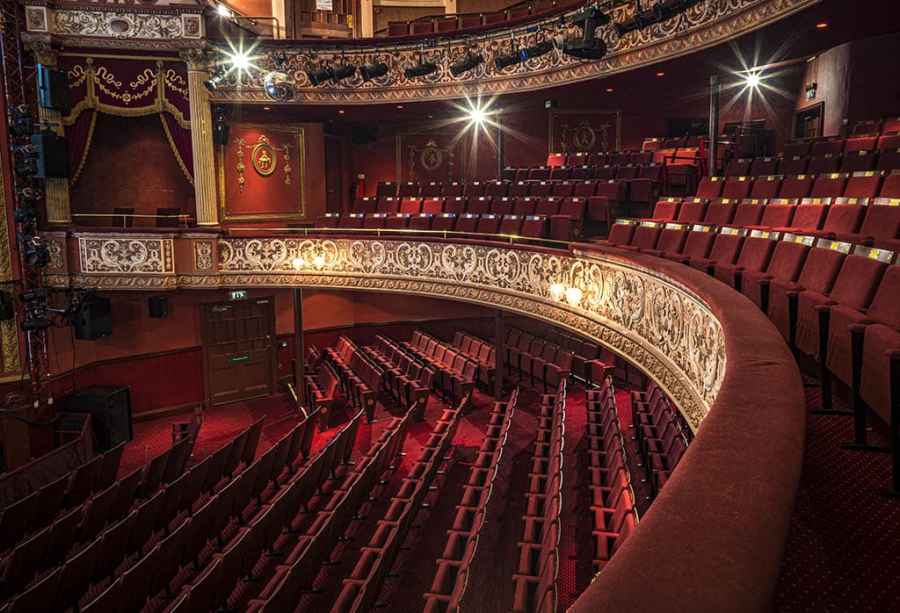It’s been almost a year since life as we knew it turned upside down, but the pandemic has changed life for some more than others. While many of us can work from home, the work of those in the theatre industry ground to a complete halt.
The livelihoods of not only actors but also stage hands, lighting and sound technicians and venue staff suddenly became vulnerable, so with social distancing preventing shows and tours, what could anybody do? Well, for Bill Ward, the answer was to fight back.
Many people will recognise the actor from his time walking the cobbles on Coronation Street or treading the boards at West End theatres starring in big productions such as Everybody’s Talking About Jamie, but Bill is also a professional photographer who normally specialises in landscapes weighted towards UK seascape imagery.
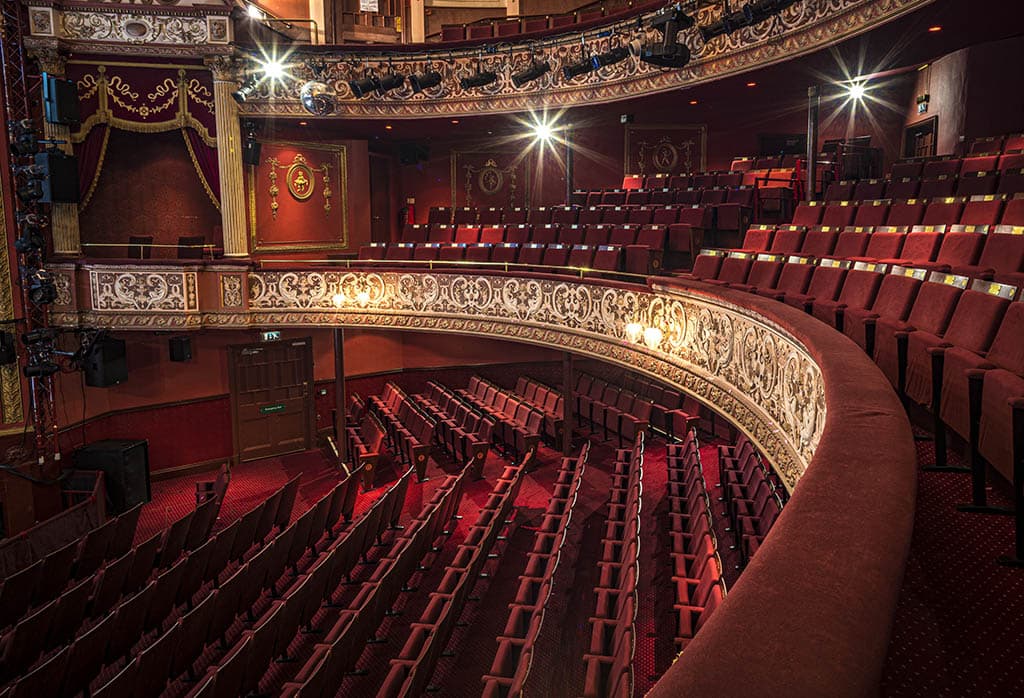
The Theatre Royal Bath’s grand auditorium
In fact Bill, who now resides in Bristol, is even an Ambassador for Pentax and leads workshops along with giving camera club talks up and down the country. In short, Bill takes a camera everywhere, even during theatre tours, which has allowed him to build up a huge portfolio of imagery from his workplace, the grand old theatres (and a few new builds) that host plays and panto and offer the public the entertainment we’ve missed so much during lockdown.
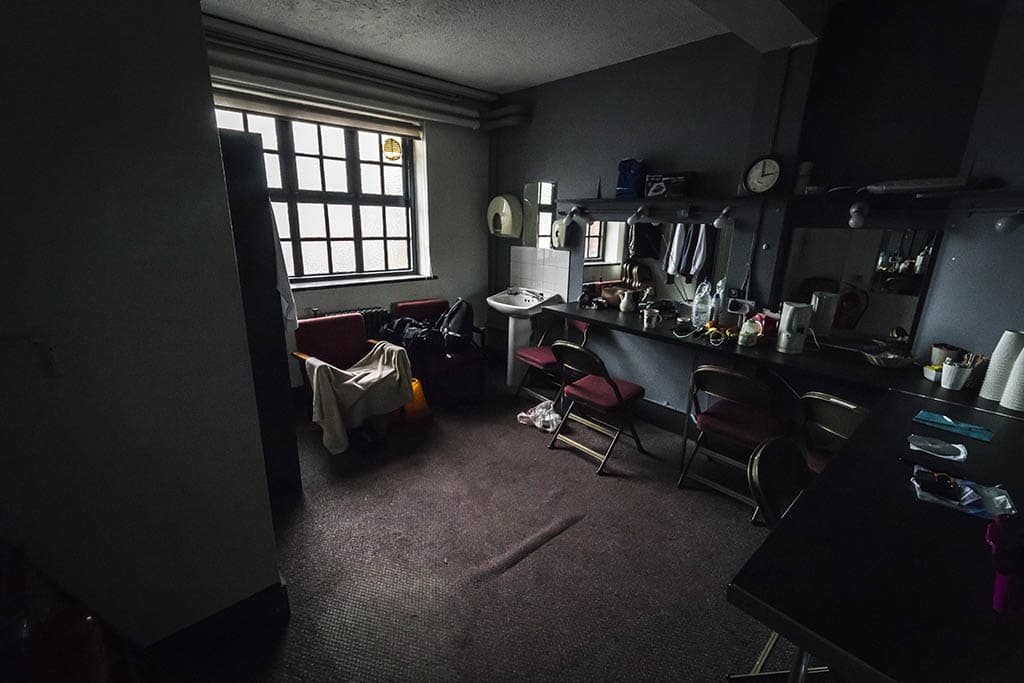
A dressing room in Connaught Theatre, Worthing
‘My acting and photography work are very closely connected, both in terms of why I take photographs, and what I take photographs of,’ explains Bill.
‘Photography, for me, is the perfect balance to my day job. The acting world can be pretty full on when it’s busy: this concentrated, highly motivated mass of humanity, beavering away to make a brand new piece of work, with extraordinary energy, usually in a pretty confined space, but I’ve also found over the years that it helps if I can balance that against literally the polar opposite: peace, quiet, space, time for myself. Which is where photography comes in and it proves to be my mindfulness so I take my camera everywhere I go with work.’

The Stage Door at the Noel Coward Theatre, West End
With theatres closing their doors and the industry in trouble, Bill was left with a dilemma; what could he do to help the theatres he’s worked in for years during the good times in what is proving to be their darkest of hours? A project formed and in a matter of just a couple of weeks, Bill had put together a beautiful coffee-table book showcasing a selection of his theatre images.
Entitled #TheatresInDanger and available from Bill’s website, the book launched at Christmas and has already sold hundreds of copies, with the proceeds going to The Theatres Trust, a charity that helps theatres and actors. But the images in the book are more than simple snapshots of venues.
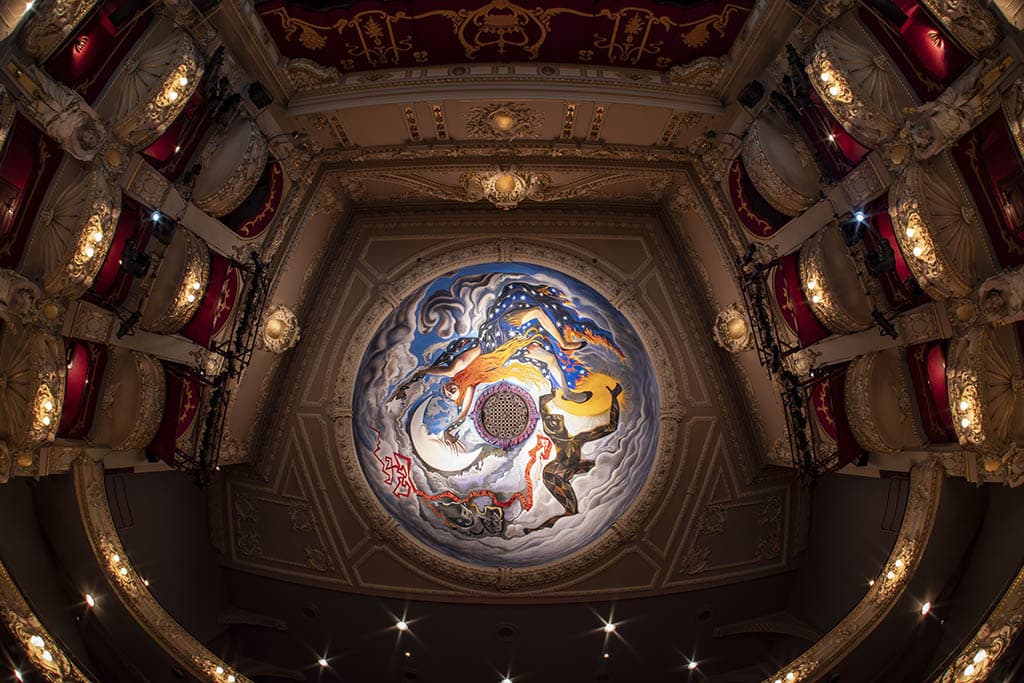
Ceiling mural by John Byrne in the King’s Theatre, Edinburgh
Instead they take the viewer on an access-all-areas journey behind the curtain, showing the grandeur and sometimes the decay of these grand buildings; a framed state-of-the-nation look at theatres and why, more than ever, they need our support. ‘One of the joys of working in the theatre is spending time in the buildings themselves. Many of the venues were built over 100 years ago, some considerably longer, and in an age where there was little or no amplification, are very much cathedrals of the spoken word. I take photographs of every building I visit with work.
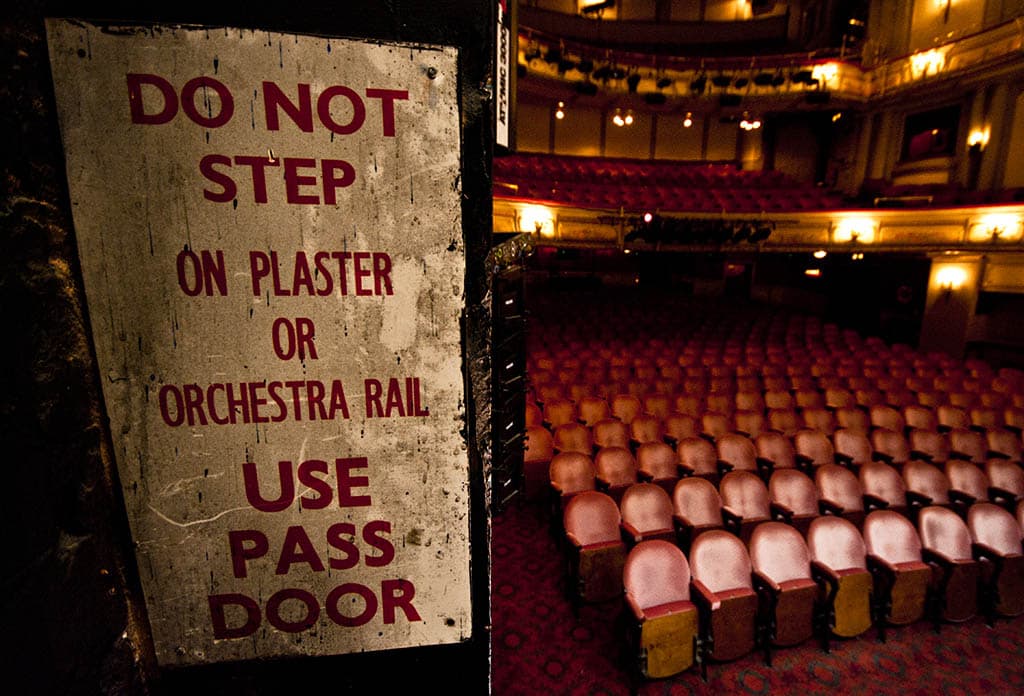
View from the wings at the Noel Coward Theatre
Before the pandemic and when working on tours, I’d often come in early and spend an afternoon or a morning in them, when no one else is around, just soaking up the atmosphere, taking it all, and quietly trying to capture some of that essence in a photograph. It’s no secret that the past ten years of austerity have been extraordinarily tough on theatres and, over the past few years, many theatres have had to rely on ticket sales, and only ticket sales, for the vast majority of their funding.
So when the theatres were forced to shut at the end of last March owing to the pandemic, the majority of them lost 90% of that ticket sale funding overnight. So I wondered if there was anything I could do to give something back, however small, to an art form, and an industry, that has given me so much. Which is where the idea for the book came from,’ explains Bill.
No stranger to taking on photo projects, Bill’s images have previously been viewed at an exhibition in The Royal Exchange Theatre in Manchester and they also adorn the walls of prestigious galleries in the North East, where Bill originally hails from.

The Kissing Wall at Theatre Royal Nottingham
As a Pentax Ambassador, Bill’s current camera is the full-frame, 36-milion-pixel K-1 Mark II DSLR, which he uses with the FA 20mm f/2.8 and FA 24-90mm lenses, along with the DA 55-300mm F4.5-6.3 when a longer focal length is needed.
‘For me, the K-1 II is a brilliant camera: magnesium alloy body, solid as a rock, great image quality. I try to travel light but on occasion I will also take in some of the bigger guns like the DFA 15-30mm f/2.8, and the DFA 24-70mm f/2.8, which are great, fast-aperture lenses and particularly good for creating starbursts from the theatrical lights in the venue.’
Of course, having great kit is only half the battle of taking successful frames, and it’s Bill’s expert knowledge of the inner workings of the theatre that help him craft such stunning frames – quite simply, not many people have stood on the stage of such venues and looked out over the architecture, the seating, the lights: the classic actor’s view. As paying punters, we’re all used to looking at the stage itself and who’s on there performing.
‘I tend to approach taking photographs of theatres in the same way that I’d approach taking photographs of anything. Just taking as much time as I can to sit there, soak it all up, and see what I notice. There’s often the theatrical equivalent of the “big vista”, a wide shot of the auditorium as seen from the stage, which for an actor is of course what you see every night, but is often quite a surprise for a member of the audience,’ explains Bill, who has included a number of these spectacular panoramas in the book.
‘Along with the big vistas, I’m often just looking for little details, how the light hits a chair or a curtain, or something I’ve noticed backstage: there’s all sorts of quirky details hidden away in the bowels of these buildings in the passages and corridors. Occasionally, though, I’ll be able to get into the auditorium before anyone else, before the lights are switched on, and the whole place is lit by just the ambient light of the Exit signs. It can be almost completely dark, but a long exposure will pick out little details that the naked eye simply can’t see.’
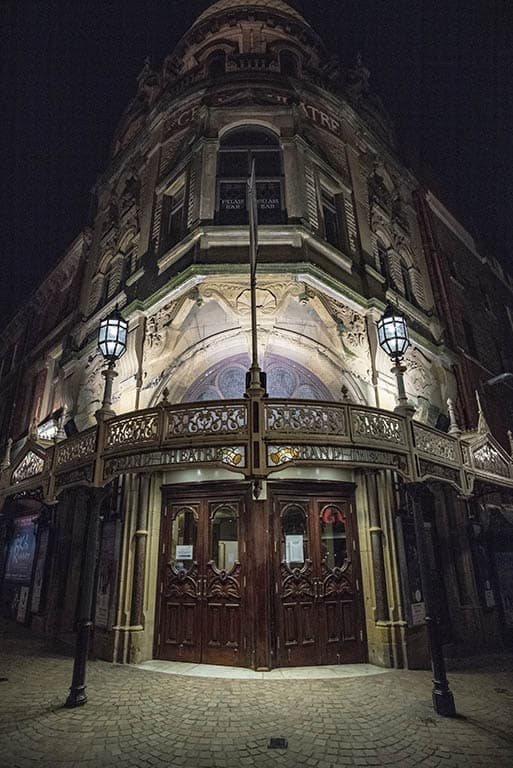
Blackpool’s Grand Theatre
One special treat viewers leafing through Bill’s book will discover is the sheer variety in the imagery; from an almost vertigo-inducing frame looking straight up to a painted ceiling mural – ‘John Byrne’s gorgeous mural on the ceiling of The Kings Theatre in Edinburgh is a personal favourite,’ says Bill – to the next page showing the famous ‘kissing wall’ backstage at the The Royal Nottingham where actors leave their own personal mark in lipstick.
‘For me, a lot of what I’m trying to capture is to do with feeling, and mood: that sense you get of being “in” a place, as opposed to just taking a photograph of the place itself. Finding out how you connect to a place, and trying to take a photo of that. I always feel very happy being in ANY theatre, whether one of the magnificent old Georgian buildings, or one of the newer, more modern creations with soft walls and bright colours.
‘On top of that, I’m also looking for different ways to tell the story of my time in this particular theatre, to make sure that I cover the more obvious things that leap out at you, like the sweep of the auditorium, for example, but if I can, rummage around for the little details that make a place unique’.
Ultimately, #TheatresInDanger is a ray of hope in what has been an incredibly tough period for everyone, including members of the theatre industry, and shows the power of being proactive enough to make the best of a bad situation. Bill is currently filming a big TV production but hopes to return to the stage when the pandemic allows. Thanks in part to his photography book and the public who support it, there will hopefully be a stage to return to.

Bill Ward is a British actor and photographer, born in Newcastle Upon Tyne. He has won awards and commendations, has a permanent collection with Mick Oxley Gallery in Northumberland and has had exhibitions at galleries around the country. His new book, #TheatresInDanger, features 40 pages with a foreword by Kate Wasserberg, Artistic Director of Out of Joint. It is available through Bill’s website for £15.95, with proceeds going to the Theatres Trust


